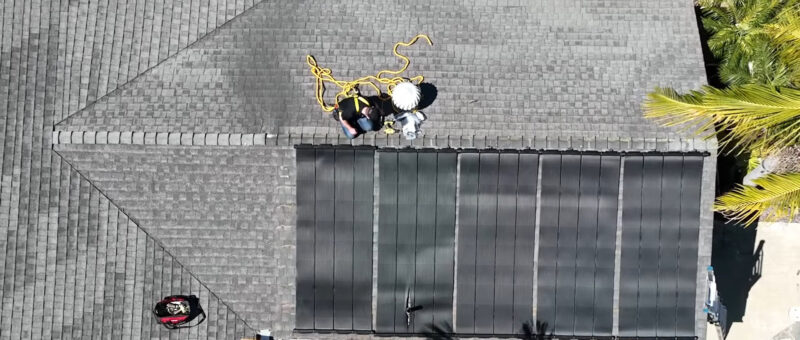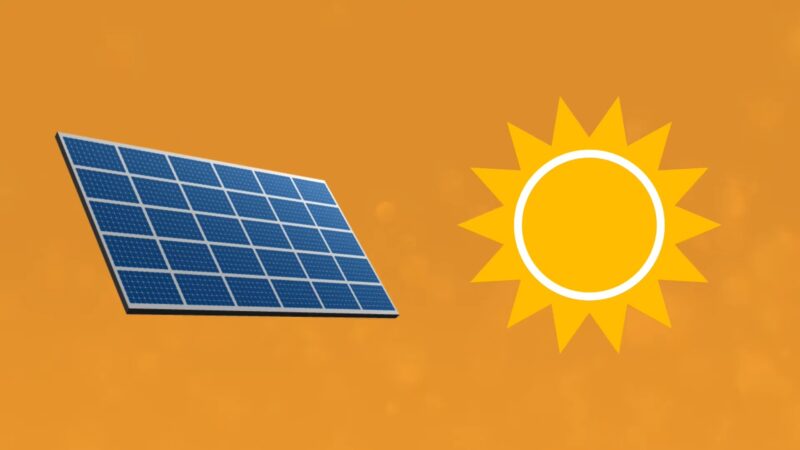Ever dipped your toes into a chilly pool and wished for a more comfortable swimming experience? Well, you’re not alone. Heating a pool can transform it into a year-round oasis, and solar heaters are becoming a popular choice for many.
In this article, we’ll explore the importance of pool heating, the advantages of using solar heaters, and the purpose of this very piece. So, grab your swim cap, and let’s dive in (literally and figuratively)!
Pro Tip: Did you know that solar pool heaters can increase your pool’s temperature by up to 10 degrees Fahrenheit? That’s like adding a touch of summer to your pool all year round!
What Is Pool Heating?

Pools need heating to maintain a comfortable temperature, especially in cooler climates or during off-peak seasons. A heated pool can also enhance the overall enjoyment and usability of your outdoor space.
Several factors can affect pool temperature, including the size of the pool, weather conditions, and shading from trees or buildings. Here’s a quick table to illustrate some common factors:
| Factor | Effect on Temperature |
|---|---|
| Sun Exposure | Increases Temperature |
| Wind | Decreases Temperature |
| Pool Cover Usage | Maintains Temperature |
Solar heaters are not only cost-effective but also environmentally friendly. Unlike traditional gas or electric heaters, they utilize renewable energy from the sun, reducing your carbon footprint.
Calculating the Size Needed
The size and volume of your pool are crucial in determining the solar heater’s capacity. A larger pool will require a more robust system.
How warm do you want your pool? The desired temperature increase will influence the size needed. Consider your personal preferences and the typical weather in your area.
Your geographical location and local climate play a significant role in the efficiency. For instance, a pool in sunny California may require a smaller solar heater compared to one in cloudy Seattle.
Here’s a handy table to help you understand how location has an impact:
| Location | Solar Heater Efficiency |
|---|---|
| Sunny Climate | High Efficiency |
| Cloudy Climate | Moderate Efficiency |
| Cold Climate | Low Efficiency |
By understanding these factors, you can make an informed decision about the size of the solar heater needed for your pool. Remember, it’s not just about heating; it’s about creating the perfect swimming experience tailored to your needs.
Efficiency and Solar Collector Types
Solar pool heaters come in various types, each with its unique characteristics. Here’s a brief overview:
| Type | Efficiency | Cost | Uses |
|---|---|---|---|
| Unglazed Collectors | Moderate | Low | Typically used for seasonal heating and are more affordable. |
| Glazed Collectors | High | High | Offer higher efficiency but come at a higher cost. |
| Evacuated Tube Collectors | Very High | Higher | Top-tier in efficiency, suitable for year-round heating but are the most expensive. |
The efficiency of a solar collector determines how effectively it can convert sunlight into heat. A higher efficiency rating means you may need a smaller collector size to achieve the desired temperature increase.
Consider your budget, desired temperature increase, and local climate when selecting a solar collector. A professional can also help you make the best choice based on your specific needs.
Pro Tip: Investing in a high-efficiency collector might cost more upfront but can save you money in the long run through reduced energy bills.
Sizing Considerations
Do you want to heat your pool only in the cooler months, or year-round? Seasonal heating may require a smaller system, while year-round heating demands a more robust setup.
Heat loss can occur through evaporation, wind, and cooler night temperatures. Using a pool cover can minimize this loss and enhance the efficiency of your solar heater.
Oversizing the heater might lead to unnecessary costs, while an undersized one may not meet your heating needs. Striking the right balance is key.
Installation and Maintenance

Installing a solar pool heater involves mounting the collectors, connecting plumbing, and integrating with your existing pool system. It’s a task that might require professional help.
The equipment needed includes solar collectors, a pump, a filter, and various mounting and plumbing materials. Costs can vary based on the size and type of the system.
Regular maintenance ensures the longevity and efficiency of your solar heater. Here’s a simple table with some maintenance tasks:
| Task | Frequency | Purpose |
|---|---|---|
| Check for Leaks | Monthly | Prevent Water Loss |
| Clean Collector Surface | As Needed | Maintain Efficiency |
| Inspect Valves and Pumps | Annually | Ensure Proper Function |
Fun Fact: Solar pool heaters have relatively low maintenance requirements compared to traditional heaters, making them an attractive option for many pool owners.
Environmental and Cost Benefits
By harnessing the power of the sun, solar pool heaters reduce reliance on fossil fuels, thereby lowering your carbon footprint. It’s a win for you and a win for our planet!
While the initial investment for a solar pool heater might be higher than traditional heaters, the operational costs are significantly lower. Over time, these savings can outweigh the upfront costs, making solar heaters a cost-effective choice.
Many governments offer incentives and rebates for installing solar heaters, further reducing the overall cost. It’s worth checking out what’s available in your area.
Pro Tip: Keep an eye on local and federal energy policies. They often change, and you might find new incentives that make solar heating even more affordable.
FAQ
How do solar pool heaters work?
They work by circulating pool water through solar collectors, where it is heated by the sun before returning to the pool.
Are solar heaters suitable for all types of pools?
Yes, they can be used for all types of pools, but the efficiency might vary based on factors like pool size, location, and desired temperature.
How much does a solar pool heater cost?
The cost can vary widely based on the size, type of collector, and installation costs. On average, you can expect to spend between $3,000 and $4,000.
Can I install the solar heater myself, or do I need professional help?
While it’s possible to install one yourself, professional installation is recommended to ensure optimal performance and safety.
How long does a solar pool heater last?
With proper maintenance, one can last between 15 to 20 years.
Will a solar heater work in cold or overcast climates?
Yes, but the efficiency might be reduced. In such climates, you might need a larger system or a supplementary heater for colder months.
Do solar heaters require regular maintenance?
They require minimal maintenance. Regular checks for leaks and occasional cleaning of the collector surface are usually sufficient.
Are there any downsides to using solar pool heaters?
The initial cost and space requirement are potential downsides. However, the long-term benefits often outweigh these initial challenges.
Can a solar pool heater be used in conjunction with other heating methods?
Yes, they can be used alongside other heating methods as part of a hybrid system.
What are the environmental benefits of using solar heaters for pools?
They reduce reliance on fossil fuels, lower carbon emissions, and contribute to a more sustainable future.
Final Words
As we wrap up, it’s clear that solar pool heaters offer numerous benefits, from cost savings to environmental advantages. They provide a comfortable swimming experience while harnessing the power of the sun – a truly renewable and clean energy source.
If you’re considering a solar heater for your pool, I hope this guide has provided valuable insights to help you make an informed decision. Remember, the right solar heater not only warms your pool but also contributes to a greener planet.
So, why not take the plunge? Consider solar heating for your pool and enjoy a warm, eco-friendly swim. It’s a decision you, and our planet, won’t regret!
